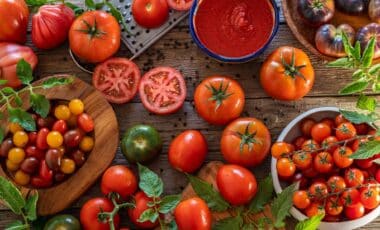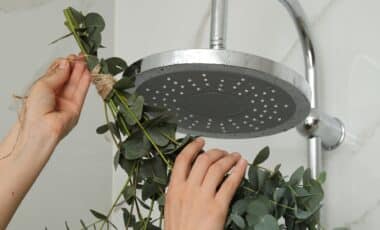
Paris offers a feast for the senses from its food to art, music, culture, and to its stately buildings and grand boulevards. Most visitors to the French capital will fall in love with all that they experience and these memories will stay with them forever.
Visitors travel to Paris for various reasons ranging from its exclusive shopping, landmark structures such as the 324m-high Eiffel Tower, museums, galleries, cathedrals and of course, renowned culinary fare paired with the country’s famous wines. You don’t need a reason to visit Paris; you just need the time.
Paris on foot

Artwork along the Left Bank nearby the Notre-Dame Catherdral.(Photo: David Bowden)
Central Paris is one of the world’s great walking precincts as it is mostly flat and around every corner, there is something to admire. My advice for a walking tour of central Paris is to use the extensive underground rail network (Metro) as a backup. Buying machine-generated tickets is reasonably easy and each ticket enables 90 minutes travel anywhere on the system after the first validation.
On my most recent trip, I took with me a copy of A Walking Tour Paris by G. Byrne Bracken, an architect and inveterate walker. I like the book because the author’s profession highlights details that similar guides gloss over and it is written for those appreciate the small detail, in the slow lane.
The city’s must-see architectural icons include the Musée du Louvre, Notre-Dame, Eiffel Tower, Arch de Triomphe, and buildings along the Champs-Élysées. I also just wanted to ‘get lost’, so just wandered using my guidebook as a framework for discovery, was most enjoyable.
I headed out in the morning for the Musée du Louvre where the famous Mona Lisa painting had been on my list of must-see activities for a long time. The Louvre is the largest museum in Paris and home to many famous artworks. The Mona Lisa is the most famous but there are other works such as Venus de Milo and The Raft of the Medusa. Being the tourist city that Paris is means that queues at popular attractions like the Louvre can be long and it is best to book a guided tour online beforehand as these groups enjoy priority viewing and legalised queue jumping.
Afterwards, I strolled along the banks of the River Seine to Île de la Cité and Notre-Dame Cathedral. Admiring the famous cathedral at any time of the day is recommended but at night, under floodlights, it is especially impressive. A bronze marker in front of the cathedral is ‘zero kilometre’ and the location from where all measurements to other French cities are made. Climb the 422 steps to the top of one of the towers to admire panoramic views of the river.
I rode the Metro from St-Michel Notre-Dame to Concorde to start the next phase of my walking tour along the famous shops lining the Avenue des Champs Elysées. Walk the 2km along this grand thoroughfare to the busy intersection that is the Arc de Triomphe.

The Arc de Triomphe (Photo: David Bowden)
The Avenue des Champs Elysées is the city’s best-known boulevard but there are many other grand avenues to explore and admire. Each evening, the trees lining the famous boulevard are ablaze with fairy lights all the way from the Place de la Concorde to the Arc de Triomphe. Dedicated followers of fashion will find it difficult to resists turning into Avenue Montaigne where any fashion label worth its hefty price tag is located.
From the Arc de Triomphe, I continued on foot down to the river and the Eiffel Tower, I waited until the early evening to discover why Paris is known as the City of Light. Just as the sun recedes below the Seine River, the Eiffel Tower is illuminated with a myriad of twinkling fairylights for a few minutes on the hour.
Left bank retreat

A glimpse of the back streets in the Latin Quarter, or the ‘Quartier Latin’. (Photo: David Bowden)
My accommodation was Hotel Saint-Paul Rive Gauche Paris, situated on La Rive Gauche (the Left Bank or southern side of the River Seine) as it is home to the learned university of the Sorbonne as well as art galleries, bookshops, and cafés.
The Quartier Latin on the Left Bank is where student cafés and bars are located making it the liveliest part of Paris each evening. Jardin de Luxembourg is a tranquil park in the neighbourhood and two-kilometre walk from Notre-Dame Cathedral.
The River Seine flows through the city centre and this becomes a guiding landmark for those exploring the city on foot. I found it easy to orient myself with a map supplied by my hotel plus my guidebook as all the street names are clearly marked.
Sensibly, each walk listed in my guidebook started and finished at a Paris Metro Station. Interested in wine, I was attracted to a walk near the Trocadéro that took me from Passy Metro to Boissière Metro. It guided me past a museum on French Radio, a house where writer Honoré de Balzac once lived (incognito so as to avoid his many creditors), apartment blocks, narrow alleyways, small public gardens, the famous Asian art collection stored in the Guimet (one of the world’s finest collections of Khmer art), and the Place du Trocadéro.
The streets around the Musée du Vin, with winding lanes and high stonewalls, reminded me of an old country rather than a cosmopolitan city. Located on Rue Charles Dickens, the wine museum and its cellars has a small but fascinating collection of winemaking implements with wine tastings and purchases also offered.
Café Society

Cafés are an essential part of French society, offering a place to sit, sip your favourite beverage and be seen. (Photo: David Bowden)
Everyone who visits France will fall in love with the food served in outlets ranging from smart Michelin-star restaurants to streetside crêperies.
Cafés are an essential part of French society and while most don’t offer haute cuisine, they are the places to sit, sip your favourite beverage, meet friends, and most importantly, to be seen. Invariably the seating is arranged in lines facing the street to ensure maximum exposure to passers-by.
Drop into famous cafés like Le Bonaparte, George V, Chez Clément, or the tranquil garden setting of Café Véry (or Dame Tartin) in the Jardin des Tuileries.
While French cuisine dominates, global food is also available as France is a multicultural country with dishes from neighbouring Mediterranean countries including northern Africa, being common.
A truly magical Paris dining destination is FRAME Brasserie on the ground floor of the stylish Pullman Paris Tour Eiffel Hotel within view of the iconic Eiffel Tower. Book a window-side table to admire the ever-changing evening lights of the Eiffel Tower and allow the chef to take charge of a memorable meal of Californian-inspired dishes.
Learn more about holidaying in Paris at Paris Office du Tourisme.







